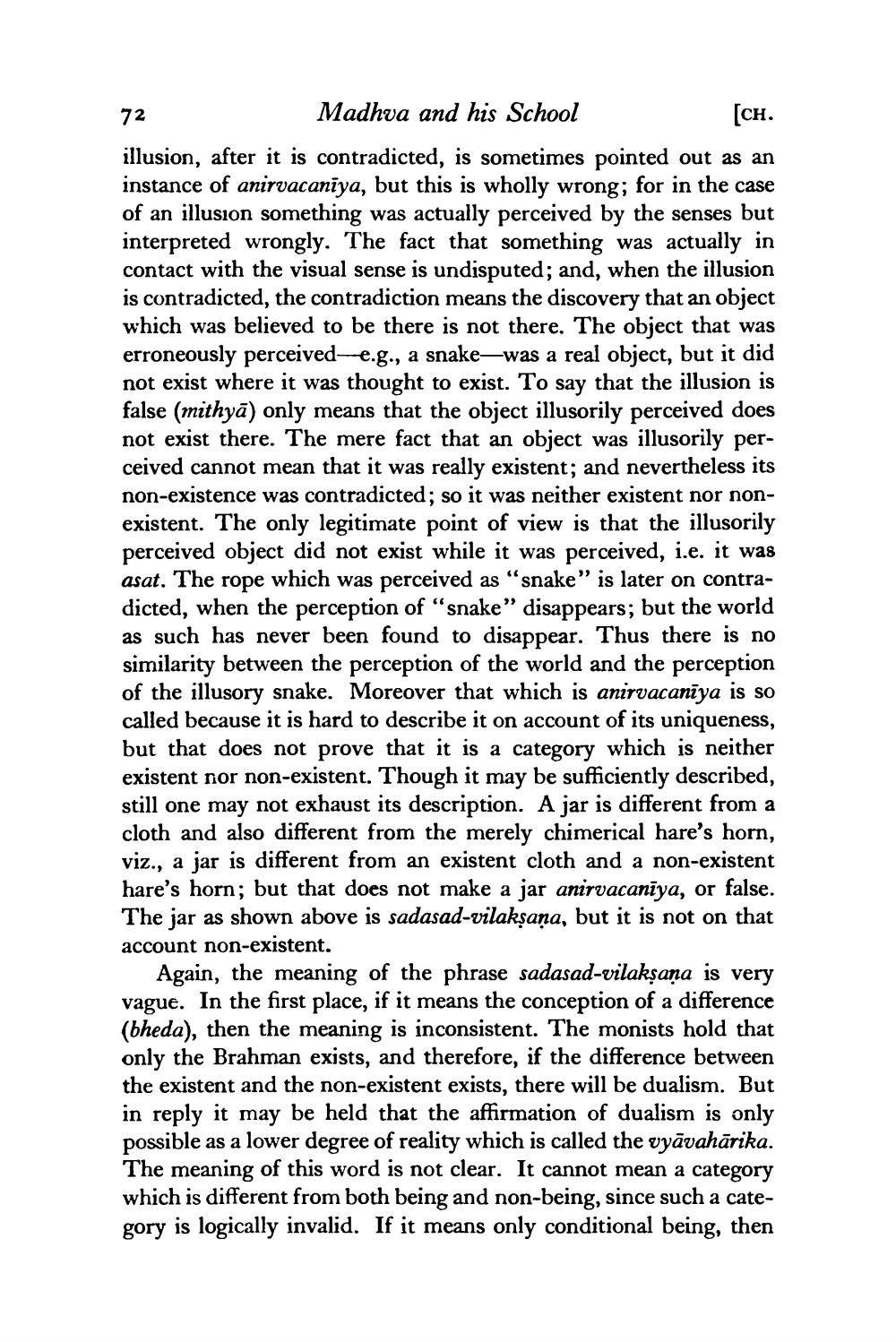________________
72 Madhva and his School
[CH. illusion, after it is contradicted, is sometimes pointed out as an instance of anirvacanīya, but this is wholly wrong; for in the case of an illusion something was actually perceived by the senses but interpreted wrongly. The fact that something was actually in contact with the visual sense is undisputed; and, when the illusion is contradicted, the contradiction means the discovery that an object which was believed to be there is not there. The object that was erroneously perceived-e.g., a snake—was a real object, but it did not exist where it was thought to exist. To say that the illusion is false (mithyā) only means that the object illusorily perceived does not exist there. The mere fact that an object was illusorily perceived cannot mean that it was really existent; and nevertheless its non-existence was contradicted; so it was neither existent nor nonexistent. The only legitimate point of view is that the illusorily perceived object did not exist while it was perceived, i.e. it was asat. The rope which was perceived as "snake" is later on contradicted, when the perception of “snake” disappears; but the world as such has never been found to disappear. Thus there is no similarity between the perception of the world and the perception of the illusory snake. Moreover that which is anirvacanīya is so called because it is hard to describe it on account of its uniqueness, but that does not prove that it is a category which is neither existent nor non-existent. Though it may be sufficiently described, still one may not exhaust its description. A jar is different from a cloth and also different from the merely chimerical hare's horn, viz., a jar is different from an existent cloth and a non-existent hare's horn; but that does not make a jar anirvacanīya, or false. The jar as shown above is sadasad-vilaksana, but it is not on that account non-existent.
Again, the meaning of the phrase sadasad-vilaksana is very vague. In the first place, if it means the conception of a difference (bheda), then the meaning is inconsistent. The monists hold that only the Brahman exists, and therefore, if the difference between the existent and the non-existent exists, there will be dualism. But in reply it may be held that the affirmation of dualism is only possible as a lower degree of reality which is called the vyāvahārika. The meaning of this word is not clear. It cannot mean a category which is different from both being and non-being, since such a category is logically invalid. If it means only conditional being, then




